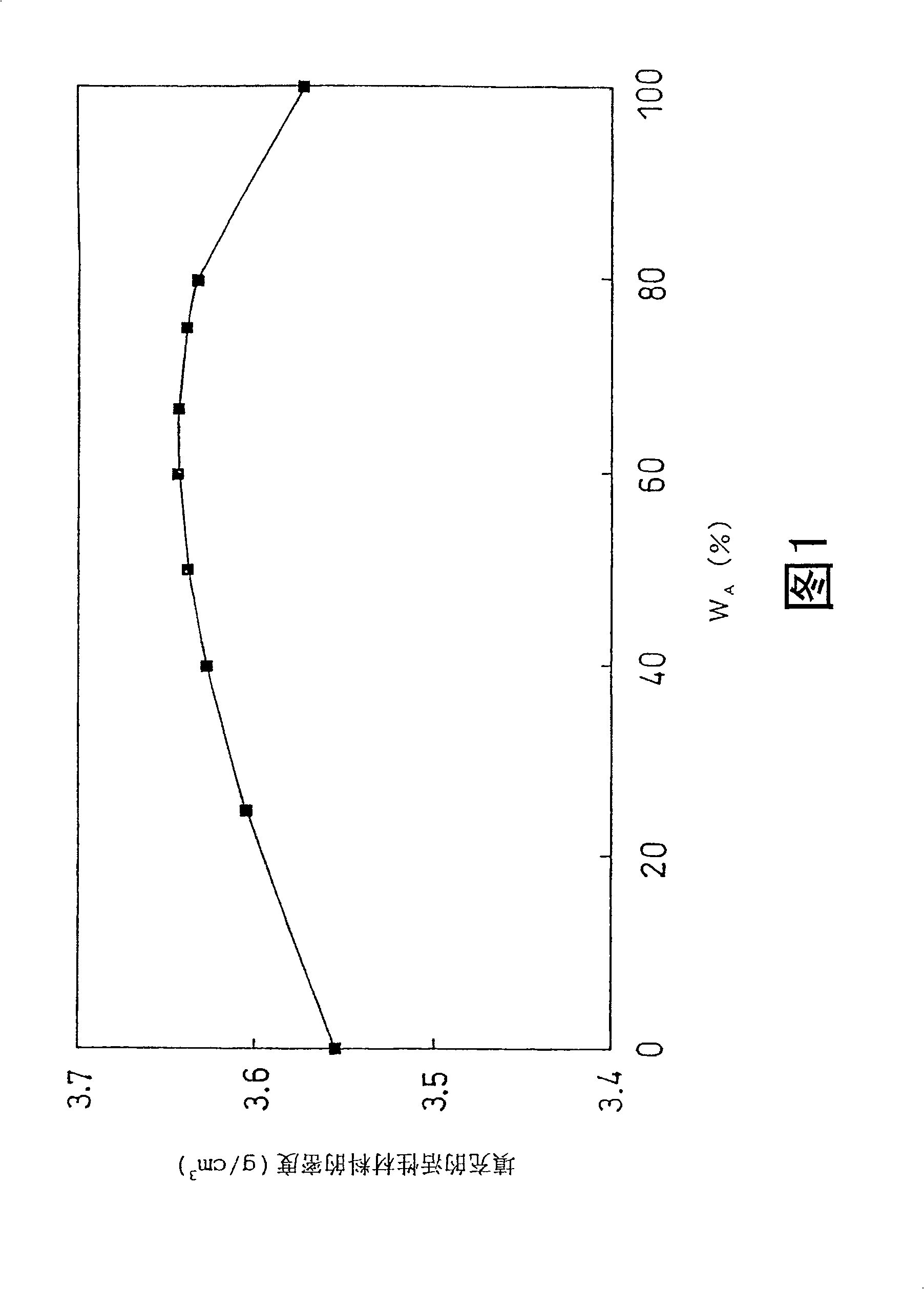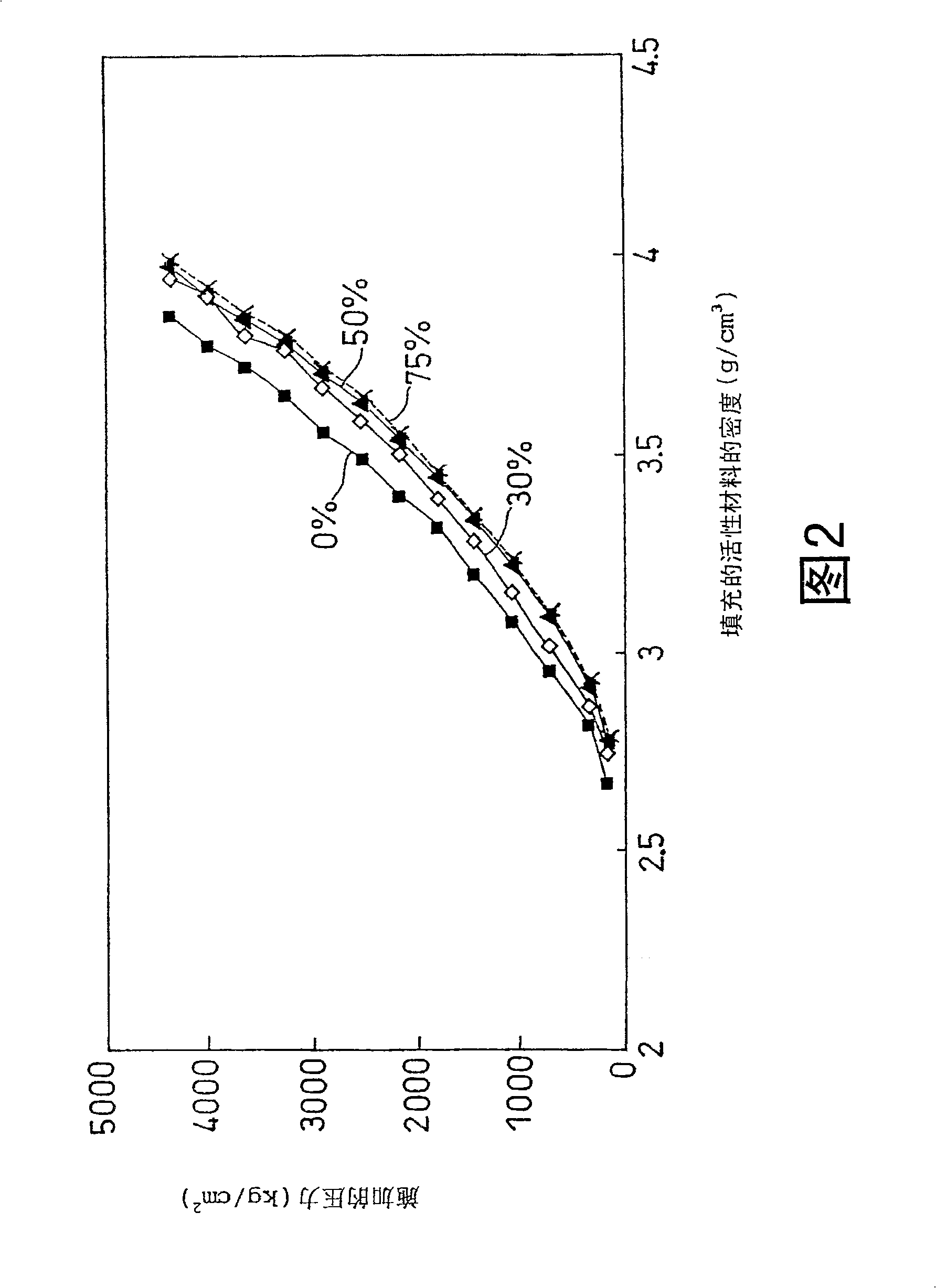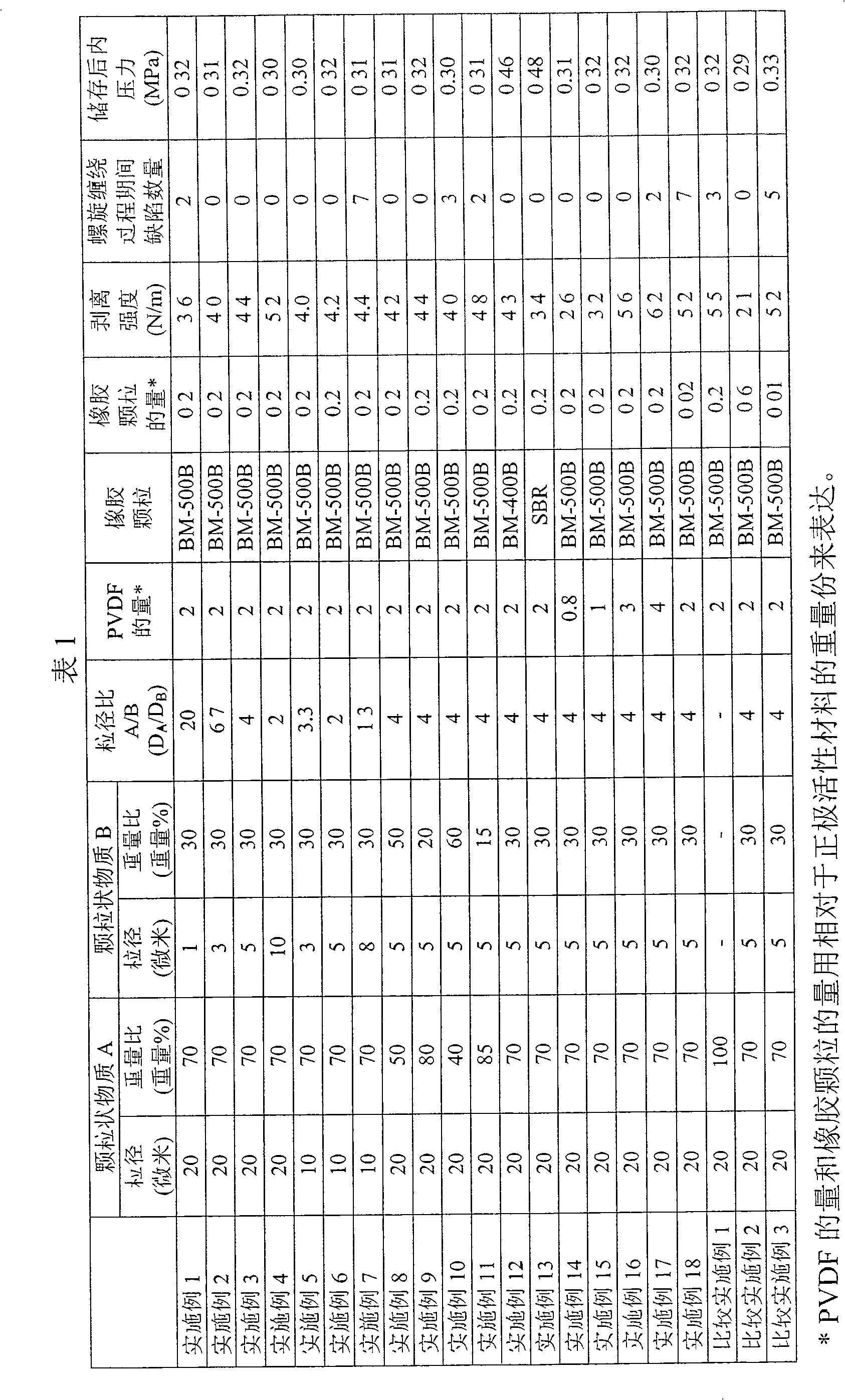Non-aqueous electrolyte secondary battery
A non-aqueous electrolyte and secondary battery technology, applied in secondary batteries, battery electrodes, circuits, etc., can solve problems such as curing, and achieve the effect of improving quality and productivity
- Summary
- Abstract
- Description
- Claims
- Application Information
AI Technical Summary
Problems solved by technology
Method used
Image
Examples
Embodiment 1
[0068] (i) Production of positive electrodes
[0069] Solid solution nickel hydroxide containing a certain amount of cobalt and aluminum is used as a raw material of the positive electrode active material. More specifically, solid solution nickel hydroxide (nickel hydroxide A) and lithium hydroxide having an average particle diameter of 7 µm were mixed, followed by firing at 950°C. The resulting product was cooled slowly to 100°C for 12 hours. Thereby obtaining secondary particles of lithium-nickel composite oxide (composition: LiNi 0.8 co 0.15 Al 0.05 o 2 ), called particulate matter A. Meanwhile, granular substance B was prepared in the same manner as in the production of granular substance A except that solid solution nickel hydroxide (nickel hydroxide B) having an average particle diameter of 0.3 μm was used.
[0070] The weight ratio of the particulate matter A and B is A:B=70:30. Particulate matter A has an average particle size of 20 microns. The average particl...
Embodiment 2 to 4
[0083] Except by changing the average particle diameter of solid solution nickel hydroxide B to 1 micron, 1.5 micron and 3 microns respectively, so that the average particle diameter of particulate matter B is changed to 3 microns, 5 microns and 10 microns respectively, according to the embodiment Batteries of Examples 2, 3 and 4 were produced in the same manner as in 1.
Embodiment 5 to 7
[0085] Except that by changing the average particle size of solid solution nickel hydroxide A to 3 microns, the average particle size of particulate matter A changes by 10 microns, and by changing the average particle size of solid solution nickel hydroxide B to 1 micron and 1.5 microns and 2.5 microns, so that the average particle size of the particulate matter B was changed to 3 microns, 5 microns and 8 microns, respectively, and the batteries of Examples 5, 6 and 7 were produced in the same manner as in Example 1.
PUM
| Property | Measurement | Unit |
|---|---|---|
| particle size | aaaaa | aaaaa |
| particle size | aaaaa | aaaaa |
| thickness | aaaaa | aaaaa |
Abstract
Description
Claims
Application Information
 Login to View More
Login to View More - R&D
- Intellectual Property
- Life Sciences
- Materials
- Tech Scout
- Unparalleled Data Quality
- Higher Quality Content
- 60% Fewer Hallucinations
Browse by: Latest US Patents, China's latest patents, Technical Efficacy Thesaurus, Application Domain, Technology Topic, Popular Technical Reports.
© 2025 PatSnap. All rights reserved.Legal|Privacy policy|Modern Slavery Act Transparency Statement|Sitemap|About US| Contact US: help@patsnap.com



